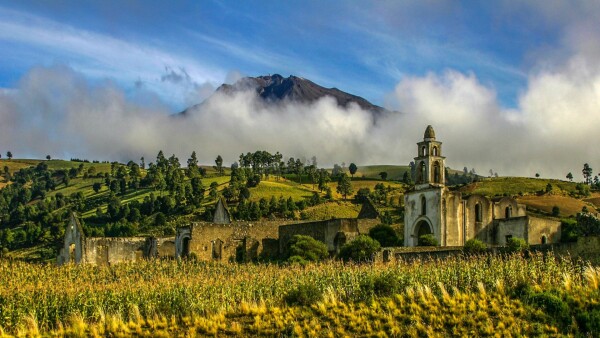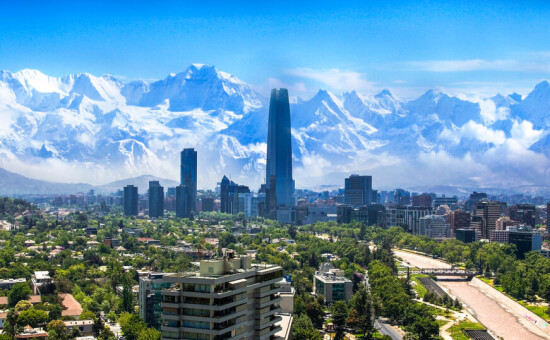Best time to visit Mexico: A seasonal breakdown
Do you want to travel to Mexico but wonder when is the best time to visit? Check out this seasonal breakdown that’ll help you plan your trip.

This post may contain affiliate links. If you use these links, we may earn a small commission. Thanks for your support.
We totally get it. A country this diverse has you contemplating the best time to visit Mexico.
You could be sitting on a storybook beach in Cancun, sinking your toes into soft white sands, soaking up that warm salty wind disheveling your hair. Or you may be snuggling up by a firepit in the mountains wearing a cardigan or even freezing your butt off in high-altitude colonial cities because you’ve chosen the wrong month. And then there are the canyons, where you ooze buckets of sweat as you scramble boulders and rappel down cliffs. The list goes on.
To help you narrow down your options for a perfect Mexico itinerary, here’s a seasonal breakdown and details on the best time to visit Cancun, Tulum, and Cabo.
Mexico’s seasons in a nutshell

- The high season is from December to April, the Mexico dry season.
- The shoulder season between July and August comes with occasional showers and relatively low prices.
- The low season is from May to June and September to October when rainfall is typical. It’s also the cheapest time to visit.
When is hurricane season in Mexico? The worst time to visit is between September and October when they are most likely to occur.
High Season

Are you into non-stop sunshine and balmy temperatures?
Visit Mexico between December and April, when an average of 24°C (75°F) is the norm, with brilliant, cloud-free skies and cozy rays patting you on the head.
If you’re looking to party, the best time to visit Cancun on the Caribbean coast is during spring break (March and April), when boozy souls paint the town red.
Needless to say, costs skyrocket in the peak season when Americans escape the cold winter weather.
Shoulder season

Given the diverse topography and the country’s sheer size, where microclimates prevail, it’s hard to pin down the best time to go to Mexico, let alone the best month. It all boils down to what you want to see and do.
One thing is sure: the shoulder season offers the best of both worlds. This time of the year isn’t heavy on the pocket and has enough sunshine to work on your tan.
Low season

When is the rainy season in Mexico? From May to October.
But first things first.
Don’t let the rains deter you.
Showers generally happen in brief, quick downpours in the late afternoon, so you’ll still have hours of wonderful sunshine to enjoy for most of the day. And prices are the most affordable in the low season.
So, this could be the best time to visit Mexico if you prefer wallet-friendly prices to dawn-til-dusk-sunshine. However, skip September and October when hurricanes are most likely to occur.
A summary of Mexico’s climate

Mexico is arid in the central-northern highlands and on the west coast, somewhat rainy in the mountain ranges and on the southern plateaus, and extremely showery in the tropical south. Almost anywhere in Mexico, summer is the wettest season.
The temperature rises progressively from north to south, culminating in an entirely tropical environment in the south. High altitudes also play a role: many cities, including the capital, have colder climates.
The Norte, a chilly US wind capable of causing sudden temperature drops, can blow during the winter, especially in the central northern regions. During the winter, the northern inland areas—and to a lesser extent, the northern coastal regions—may experience chilly periods due to this wind, particularly in hillscapes and the mountains.
Are you a bargain hunter?
Then the best time of year to visit Mexico could be in the warm, generally dry November. That’s just after the worst of the rainy season and before the start of the high season when precipitation is rare.

Another big plus in November is Día de Los Muertos, or Day of the Dead, a two-day celebration that reunites the living and the dead. It’s one of the largest celebrations in the country. And definitely worth witnessing.
Even though it’s high season, you might still get a few good deals in January after the New Year celebrations and before spring break, when all hell breaks loose. In addition, the weather in Mexico in January is balmy, so keep that in mind if you’re keen on the sunshine and low prices in the bargain.
The best time to visit Tulum

November and December are ideal months to check out Tulum weather-wise.
Avoid the region from January to March if you hate crowds. And skip June, September, and October; these months have the most rainfall.
From May to September, Tulum’s temperatures peak between 33°C (91°F), with nightly lows of 24°C (75°F).
The best time to go to Cabo San Lucas

You’d be forgiven to think Cabo San Lucas will blow your budget, given its posh hotels and swanky feel, but not everything is expensive. The best time to visit this hotspot of gently sloping dream beaches with golden sands, crystal waters and rock formations is between March and May.
Winter crowds have dispersed, and summer storms have yet to arrive.
November is also a pleasant month for a trip, but you’ll need to start looking for a hotel early if you want to save money.
Between mid-December and mid-April, you’re likely to spot whales. If you enjoy fishing, drop by in the late summer or fall.
The best time to visit Mexico City

Eager to see Mexico City’s weather at its best?
Remember, Mexico City sits at 7,382 feet above sea level. So if you go in March, April, or May, temperatures generally remain in the 20s°C (70s°F), with chilly evenings plunging as low as the mid-10s°C (50s°F). It’s gorgeous weather, especially considering the city’s cool winters and rainy summers.
Although the metropolis will be bustling with visitors this year, hotel rates are still reasonable.
FAQ
Hurricanes are most likely to strike in September and October.
Hands down, the best beach time is between May and June, when wintertime crowds have left, and summer storms have yet to arrive.
From beaches, whale watching, and adventure tours to tasting Mexican cuisine and visiting colonial neighborhoods, parks, churches, and museums, a land as diverse as Mexico offers a myriad of things to do and see.






